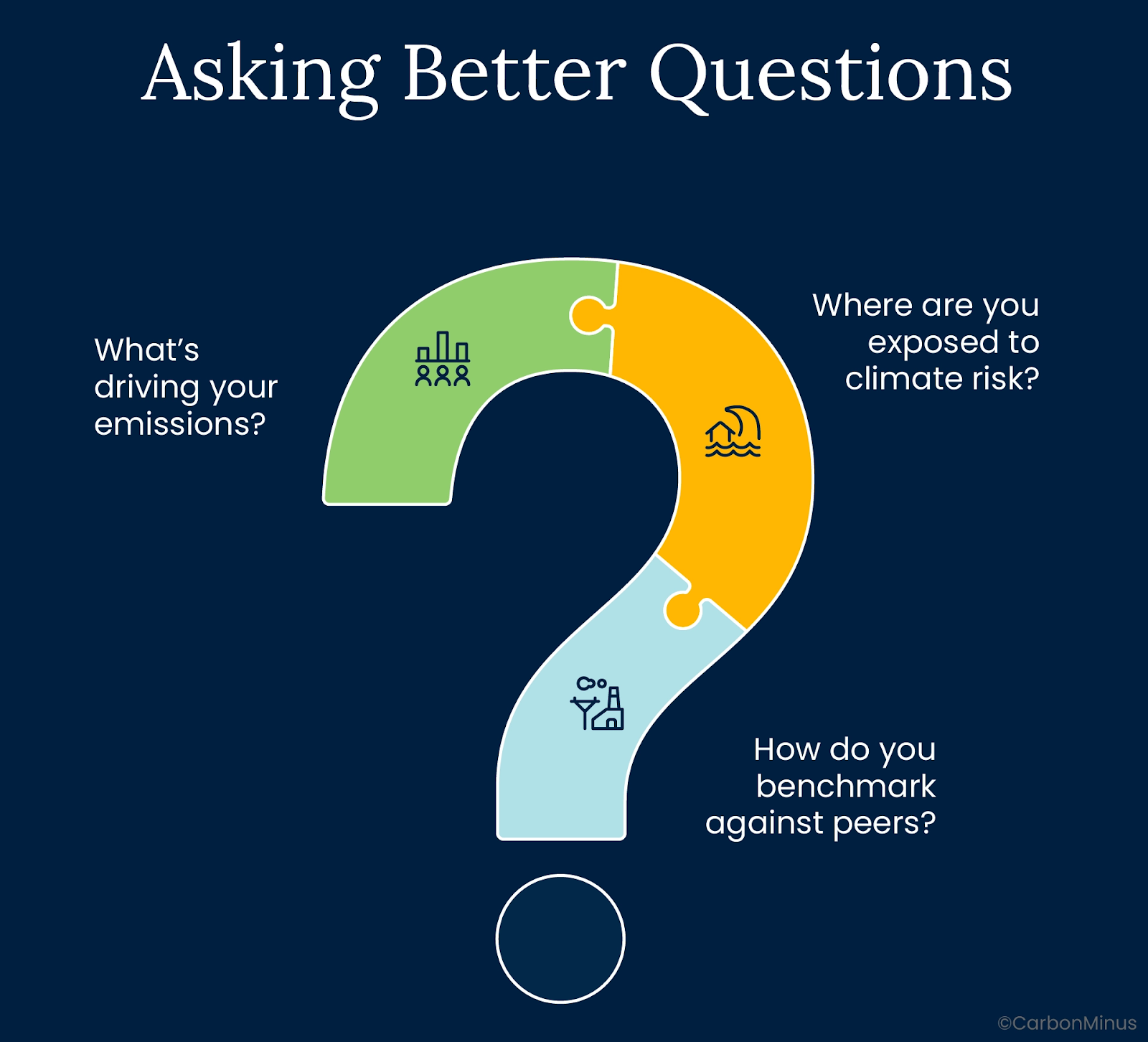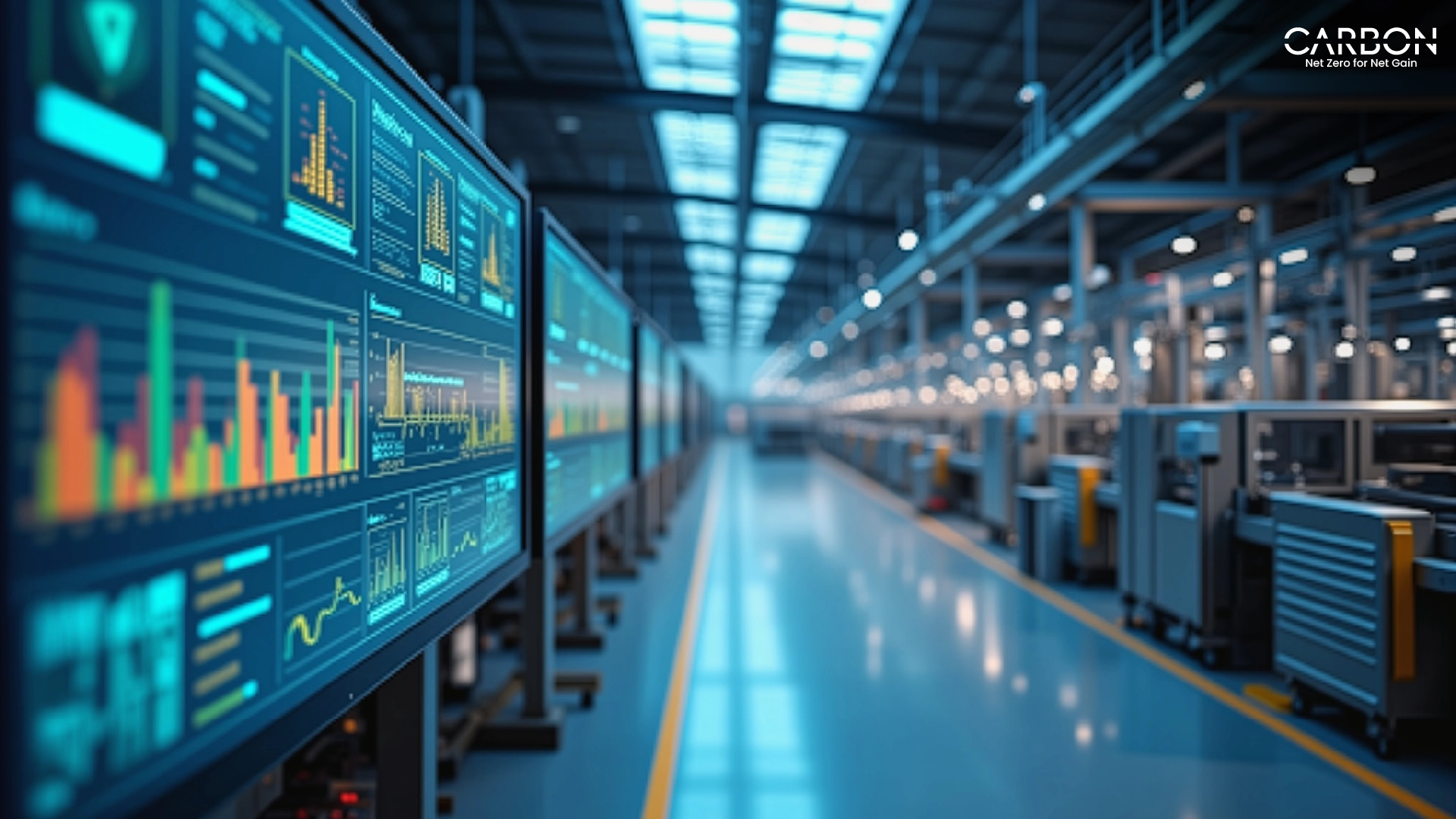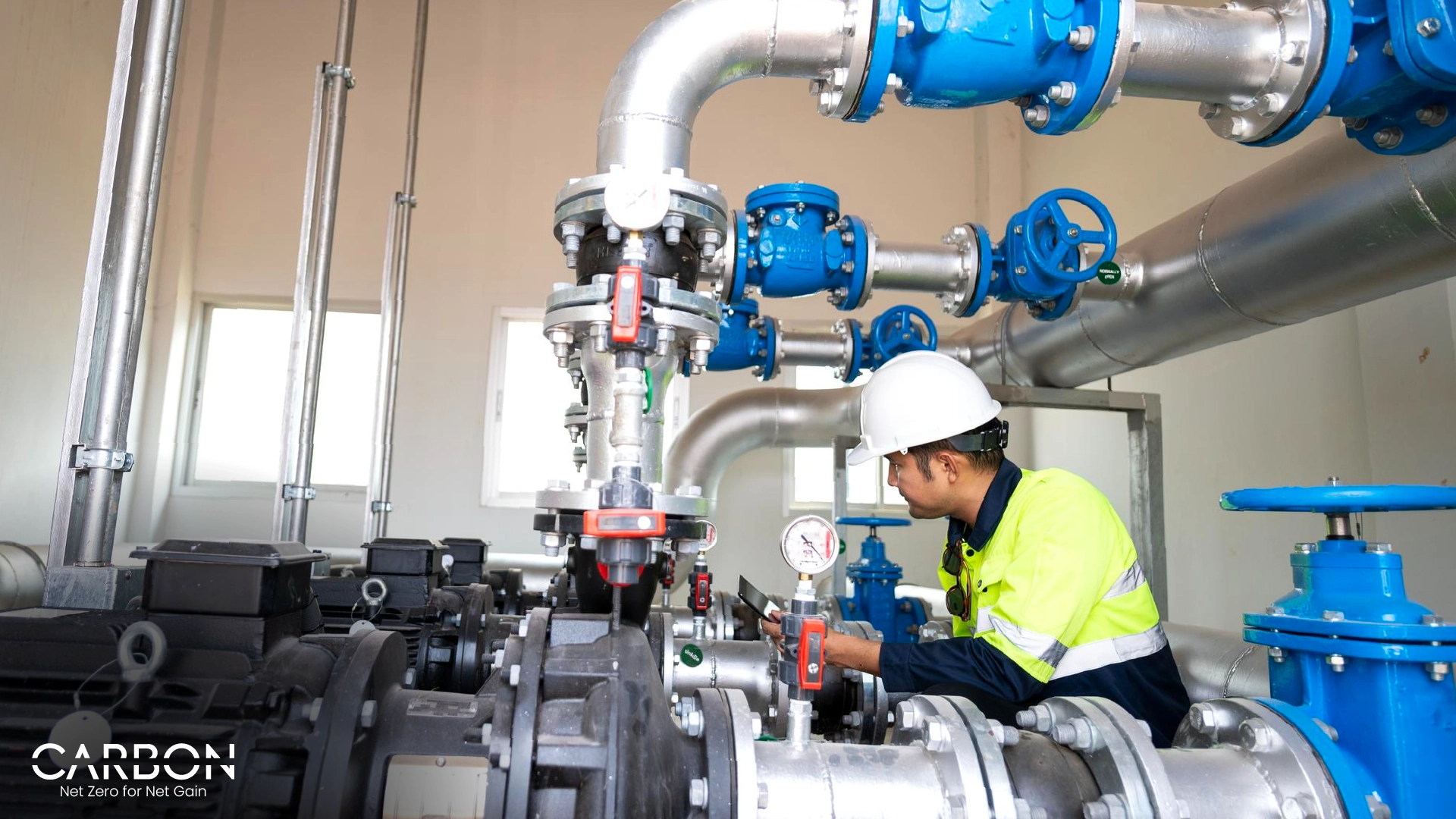In my last article, I laid out the three forces reshaping how businesses operate: carbon pricing, mandatory reporting, and the tightening race to net-zero.
They’re operational realities. And they come with a level of complexity that most legacy systems, and frankly, most leadership teams, weren’t built to handle.
Because spreadsheets won’t get us through this.
Managing emissions, reporting under multiple frameworks, and finding credible decarbonization pathways all require more than manual effort and goodwill. They require tools that match the scale and speed of the problem.
That’s where technology comes in as a serious enabler. And when applied well, it does something important: it makes sustainability practical.
That’s why the real opportunity here lies in the ability to make better decisions. To build systems that give us clarity, accountability, and insight in real time.
That’s why I believe technology, especially AI, has moved to a core part of sustainability strategy. It’s how we shift from chasing compliance to leading with intelligence.
AI’s Transformative Power in ESG and Climate Disclosure
As I had mentioned in my previous article, sustainability reporting has gone from a corporate social responsibility exercise to a core governance function. And it’s grown in complexity just as fast.
(Read all about it here – <link to article 1>)
Frameworks like the EU’s CSRD and India’s BRSR now ask companies to report hundreds, sometimes over a thousand, distinct data points. Add in the potential SEC climate rules and the global push for Scope 3 transparency, and it’s no longer a task you can manage with spreadsheets and goodwill.
In fact, a 2024 survey showed that more than 60% of companies still rely heavily on spreadsheets for ESG data. That gap between regulatory demand and technological capability is where many businesses are struggling.
This is where AI starts to change the game.
Most ESG teams still stitch together data from 10+ spreadsheets. AI turns this reactive scramble into proactive intelligence
AI can automate data collection across multiple sources—internal systems, IoT sensors, utility bills, even unstructured documents. Natural Language Processing can pull key insights from supplier reports or news articles.
Meanwhile, algorithms can cross-check, validate, and normalize that data to fit reporting frameworks like CSRD, BRSR, ISO 14064, or whatever your investor asks for next quarter.
And yes it delivers speed. But essentially, what you get is quality. AI cuts down manual errors, improves data consistency, and creates audit-ready records. Analysts estimate that AI can cut ESG data prep time by up to 50%.
But more importantly, it goes beyond compliance.
Once you have structured, high-quality data, you can start asking better questions.

That’s why, AI is turning sustainability reporting into a source of insight. And in many cases, competitive edge.
Driving Operational Excellence and Decarbonization with AI
There’s been a lot of focus on AI’s role in sustainability reporting, and rightly so. But the real value starts to show when you move beyond reporting and into operations.
This is where AI becomes a lever for actual emissions reduction.
Take energy use. In buildings, AI-powered systems are already cutting consumption by 5–15%. In manufacturing, those numbers climb even higher, optimizing production schedules, reducing energy waste, and helping plants run leaner.
In some specific applications, companies are reporting energy savings between 10% and 20%.
And this is just the beginning. The global market for AI in energy management is growing at over 20% annually. That tells you how quickly this is shifting from experimental to essential.
Then there’s predictive maintenance. Instead of waiting for equipment to fail, AI models analyze sensor data in real time, spotting anomalies, flagging potential breakdowns, and preventing energy loss from inefficient machines.
Studies show this can cut maintenance costs by 25–30%, and reduce unexpected outages by as much as 70%.
We’re seeing similar gains in logistics and manufacturing. AI-optimized delivery routes are bringing down fuel use by up to 25%. While in factories, AI is helping fine-tune processes to minimize waste per unit produced.
The result? Lower emissions, lower costs, higher resilience.
This is where sustainability starts to move from strategy slide decks to operational P&L. And it’s where AI proves its worth as a driver of day-to-day efficiency.
Emerging Technologies: Bolstering Trust and Transparency
But as sustainability efforts scale, so does the scrutiny.
Stakeholders, investors, regulators, customers, were once asking whether your company is taking action. Now, they’re asking whether that action is real. Verifiable. Auditable. Immune to greenwashing.
This is where emerging technologies start to matter for trust building.
Blockchain is a good example. Distributed ledgers can track raw materials across the supply chain, verify sustainability claims, and create immutable records of emissions or offsets. That’s especially relevant for Scope 3 emissions where data is scattered, and credibility is often questioned. In fact, the market for blockchain in supply chains is expected to surpass $15 billion by 2028..
Decentralized AI is another area to watch. It brings together the intelligence of AI with the privacy and resilience of decentralized networks. In plain terms, it means companies can collaborate and share insights without giving up sensitive data. That’s a critical piece if we want more industries to participate in sustainability without adding risk.
And of course, IoT is what powers all of this. Billions of sensors are already deployed in factories, logistics networks, and energy systems. These devices give AI the real-time data it needs to operate effectively. By 2025, nearly 37 billion industrial IoT connections are expected worldwide.
For instance, CarbonMinus uses predictive algorithms to identify potential issues before they become problems, thereby minimizing downtime.
That’s why, these technologies raise the floor on what’s possible, and raise the bar on what’s expected.
Technology Won’t Solve Sustainability on its Own
But without it, we’ll fall short on data, decisions, and delivery.
AI, IoT, and blockchain have become practical tools. And when used with intent, they shift sustainability from a reporting obligation into something much more valuable: a system for clarity, control, and continuous improvement.

Technology like this can unlock savings. Spark product innovation. Open up new business models. But only if it’s embedded and not bolted on. That’s the leadership challenge: integration.
Building systems that connect operations, compliance, and strategy in real time.
The opportunity is clear. What used to be a cost center is becoming a performance advantage. Better resource use. Smarter decisions. Credible reporting. And a business that’s built to adapt as expectations rise.
In my next article, I’ll explore how companies can take these tools and apply them to real, science-based decarbonization pathways because with the right foundation in place, the next step is execution.




